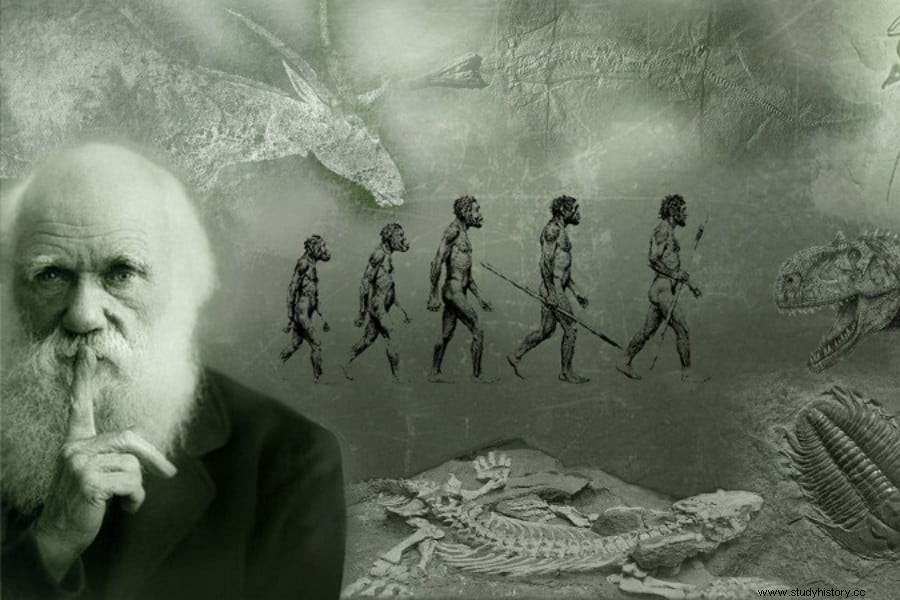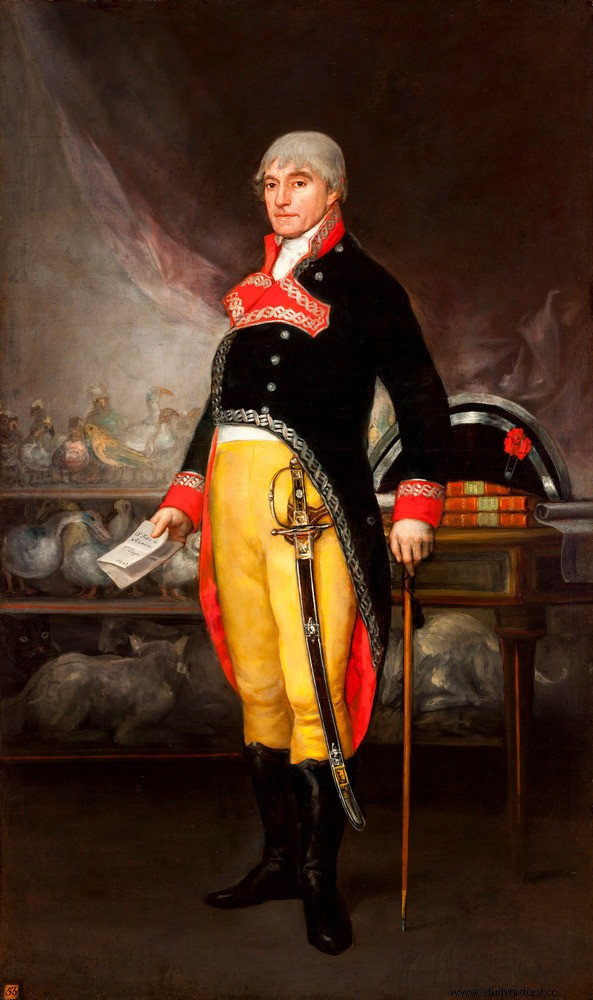Logically, Charles Darwin did not wake up one morning in 1859, after a night of dreamlike revelations, and start writing The Origin of Species . Science, like evolution, is always based on the past. Darwin, in addition to using the evidence he gathered on his expedition on the Beagle voyage in the 1830s and his subsequent discoveries through research, correspondence and experimentation, was influenced by the ideas of earlier thinkers (his own grandfather Erasmus Darwin , Thomas Malthus, Jean-Baptiste Lamarck, Georges Louis Leclerc... or the Spanish Tomás de Berlanga and Felix de Azara ).

Tomás de Berlanga
Tomás Martínez Gómez He was born in Berlanga de Duero (province of Soria, Spain) in 1490, studied in Salamanca, in the Convent of San Esteban, and there he took the habits of the Order of Santo Domingo in 1508, adopting the nickname of his birthplace, Berlanga. Since then, Fray Tomás de Berlanga. In 1511, with the second Dominican expedition to the New World, he arrived on the island of Hispaniola. Thanks to his know-how and his know-how, demonstrated day by day, especially in the noble art of listening and mediating (the perfect diplomat), he was sent to Lima to mediate in the territorial conflict between Diego de Almagro and Francisco Pizarro, and it also helped him to be appointed bishop of Castilla del Oro de Tierra Firme, whose episcopal seat was in Panama. And there he proved to be a visionary:in 1535 he conceived the idea of connecting the Atlantic with the Pacific taking advantage of the conditions of the Isthmus of Panama, and drew up a plan that consisted of connecting the Chagres and Grande rivers to create an interoceanic canal. Unfortunately, the project had to be scrapped due to the enormous costs involved in its realization... and in 1914 the Americans inaugurated it after taking up a French project.

He also discovered the Dominican, by chance, the Galapagos Islands, where after studying their flora and fauna he sent a letter to the emperor in which he described what was discovered there, and already hinted at a more than important detail:
The species of iguanas on the islands are completely different from those on the mainland.
A sign of his respect for ecology and animals -in the 16th century!!!- is evidenced in several letters in which he shows his concern for the fauna of the Galapagos (giant tortoises, iguanas, birds or sea lions ), who did not seem to show any fear in the presence of human beings (and that for them was potentially lethal), and in denouncing the use of the net to remove pearls from the sea, due to the ecological destruction that this represented, and advocating by the traditional method. And to top it off, our brother is the patron saint of the Mediterranean Diet since UNESCO included the Mediterranean Diet (represented by Spain, Italy, Greece and Morocco) in the Representative List of the Intangible Cultural Heritage of Humanity in 2010. And why name the Dominican with this title? Well, because in addition to being responsible for organized agriculture in the New World, thanks to him agricultural techniques were transferred from our country to Central America, we also owe him the introduction of the tomato into Europe (some sources also attribute the potato to him) and, As a good "mediator", he brought the banana to the American continent. That is why a variety of bananas in Mexico is called "Dominican".
Felix de Azara
Felix de Azara , born in 1742 in Barbuñales (province of Huesca, Spain), was a self-taught naturalist who, as a Lieutenant Colonel of Engineers, was sent to South America in 1781 with the task of adequately delimiting the borders between Spain and Portugal according to the Treaty of San Ildefonso (1777). There he waited 12 years for the Portuguese authorities to appear, but far from getting impatient, Azara spent the time touring Paraguay and the Río de la Plata, observing the fascinating world around him and conducting a detailed study of the species in the area. His powers of observation detected a fact that naturalists had overlooked for centuries:how the environment affects the physical appearance of living beings.
Mammals were once thought to migrate from Europe to America through the Bering Strait. De Azara defends that no, that the animals of America are exclusively American and have absolutely nothing to do with Europeans. So there is a creation in space and time, because each geographical area has its own species and has evolved over time. That is, there is a multiple creation in time and space. He was one of Darwin's forerunners. [Eladio Liñán – Professor of Paleontology at the University of Zaragoza]

Felix de Azara (Goya, 1805)
In 1809, a compendium of his work entitled Travels in South America was published. , translated into French, German and English, and whose observations on the influence of the environment gave rise to new currents of thought that the work of Charles Darwin would turn into theory. The Englishman, on his important trip around the world after which he published his famous deductions, constantly mentions Azara and is amazed at the perspicacity of the Huescan, who had asked himself the same questions 60 years earlier
Tomás de Berlanga put us on the track, Félix de Azara reasoned in a similar way as Darwin would do several decades later, and Darwin… finished the job by developing and generalizing the theory of the evolution of species.
